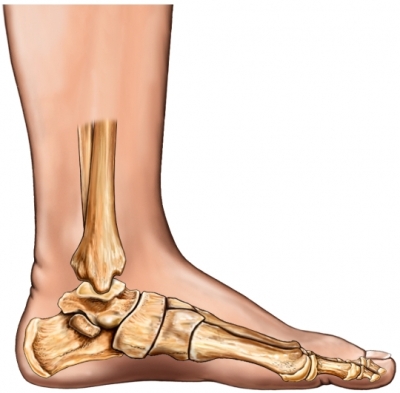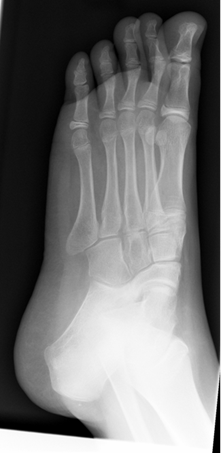Enhance your health with free online physiotherapy exercise lessons and videos about various disease and health condition
Pes Planus
Flat feet, or pes planus, are a defect of the foot that eliminates the arch. The condition is most often inherited. Arches, however, can also fall in adulthood, in which case the condition is sometimes referred to as posterior tibial tendon dysfunction (PTTD). This occurs most often in women over 50 but it can occur in anyone.

The following are risk factors for PTTD:

- Wearing high heels for long periods of time is a particular risk for flat feet. In such cases, over the years, the Achilles tendon in the back of the calf shortens and tightens, so the ankle does not bend properly. The tendons and ligaments running through the arch then try to compensate. Sometimes they break down and the arch falls.
- Some studies have indicated that the earlier one starts wearing shoes, particularly for long periods of the day, the higher the risk for flatfeet later on.
- Other conditions that can lead to flat feet or PTTD include obesity, diabetes, surgery, injury, rheumatoid arthritis, or use of corticosteroids.
Some research suggests that flat feet in adults can, over time, actually exert abnormal pressure on the ankle joint that can cause damage. One indirect complication of flat arches may be urinary incontinence or leakage during exercise. The less flexible the arch, the more force reaches the pelvic floor, jarring the muscles that affect urinary continence. Never the less, whether flat feet pose any significant problems in adults is unknown. For example, a 2002 study on athletes with flat feet indicated that they had no higher risk for leg or foot injuries than athletes with normal arches.
Treatment for Flat Feet in Children
Children with flat feet often out grow them, particularly tall, slender children with flexible joints. One expert suggests that if an arch forms when the child stands on tip-toes, then the child will probably outgrow the condition.
Treatment for Flat Feet in Adults
In general, conservative treatment for pes planus acquired in adulthood (posterior tibial tendon dysfunction) involves pain relief and insoles or custom-made orthotics to support the foot and prevent progression. In severe cases, surgery may be required to correct the foot posture, usually with procedures called osteotomies or arthrodesis, which typically lengthen the Achilles tendon and adjusting tendons in the foot. One procedure uses an implant to support the arch. These procedures have potential complications and conservative methods should be tried first.
Pes Planus or Flat feet exercises:
Read more about Flat Foot on Wikipedia
- 1. Wear shoes which have arch support. It is one of the most effective foot exercise to cure flat feet. Don't wear high heels for a long period of time.
- 2. Sit on the floor and place your feet flat on the floor. Lift your left feet's toes and foot except the heel. Hold this stretch for 10-15 seconds and then do with right feet. Repeat the exercise 5 times.
- 3. Sit on the floor with knees bend and hands in the back for support. Separate the foot from the floor whilst keeping the heel on the floor. Cramp the toes and hold it for 15 seconds.
- 4. Lift the left upper foot and rest it on the other. It is like a criss-cross foot position/ foot over foot. Rest the middle of the foot on the other feet and exert little pressure. Hold it for a minute and then repeat with right flat foot (pes planus).
- 5. Spread the feet and join the soles of the heels. Holding your feet just above the ankles. Try spreading the toes much further till you feel a stretch. Make a curve by cramping the feet and letting the toe touch the floor.
- 6. Sit with legs straight touching the floor. Lift your right feet and touch the last toe finger of the left feet. This foot exercise is an effective stretching to build an arch.
- 7. Join the feet together and then spread the heels on both the sides with toes joined. Do this flat feet exercise in a sitting position for best results. You can also spread the knees and join all the toe fingers together whilst keeping the heels apart. Hold this flat feet stretching exercise and repeat again after breaks.
- 8. Put your heels on tennis or hand balls and big toes touching the floor. Hold a rod or an object to balance the body weight. Put the body weight on the right heel and then breath in and out. Shift the pressure from the right to the left. After 2-3 minutes shift the ball towards the front foot, heels touching the floor and then repeat again. Breath in and out during this flat feet exercise as it encourages stretching and relaxation of the leg and feet muscles. Use these flat feet exercises to cure flat feet and always wear tight shoes with an arch support and avoid wearing high heels for a continuous stretch.
Return from Pes Planus to Home Page
Return from Pes Planus to Orthopedic Physiotherapy
Recent Articles
|
Author's Pick
Rating: 4.4 Votes: 252 |

